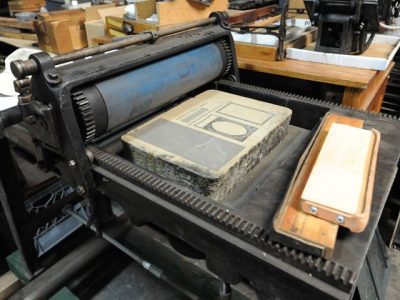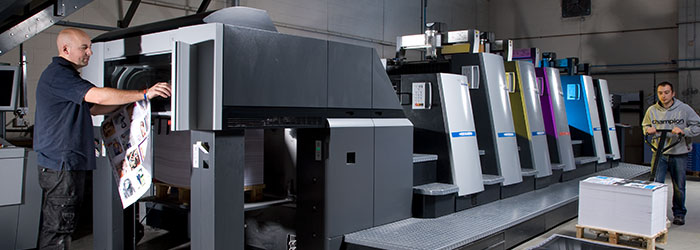Custom Designs Enhanced Through litho printing
Custom Designs Enhanced Through litho printing
Blog Article
A Comprehensive Guide to Comprehending Litho Printing Techniques
The globe of litho printing, a method originating from the late 18th century, is a remarkable blend of background, science, art and development. This thorough overview will decipher the complexities of this printing approach, from the structure of litho inks to the obstacles encountered in modern-day applications. As we venture right into the intricacies of lithography, the value of automation and sustainability in guaranteeing its future relevance ends up being increasingly clear. Remain with us as we trip into the fascinating realm of litho printing.
The Historic Evolution of Litho Printing
The historic trajectory of litho printing, an essential development in the world of interaction, is an exciting tale of human ingenuity. Birthed in the late 18th century by Alois Senefelder, this strategy was originally an economical method of releasing theatrical jobs. Lithography, originated from the Greek words for 'rock' and 'to write', made use of a smooth stone surface area to transfer images onto paper. The procedure advanced with the arrival of the rotating press, which greatly raised efficiency (litho printing). In the 20th century, the advancement of offset lithography changed the market, allowing for automation of top quality prints. Each phase of litho printing's evolution showcases mankind's unrelenting pursuit of performance and top quality in aesthetic communication.
Decoding the Scientific Research Behind Litho Printing Inks
Progressing in the exploration of litho printing techniques, the focus now shifts to the science behind litho printing inks. The composition of these inks, their drying process, and shade mixing techniques develop the foundation of this complex art form. Comprehending these elements is essential to mastering the craft and achieving the desired print results.
Composition of Litho Inks
In lithographic printing, the essential duty of litho inks can not be overemphasized. The composition of litho inks varies depending on its function, however normally, they consist of 2 primary elements - cars and pigments. Pigments, the color-providing aspects, are carefully ground particles put on hold in the vehicle, a fluid that carries the pigment onto the printing surface area. The automobile is a complex blend of solvents, materials, and oils, which influence the ink's drying out time, bond, and gloss. In addition, numerous additives are present to boost specific buildings like flow, drying out, and resistance to environmental impacts. Each part plays a vital component in the final print's high quality, making the specific formulation of litho inks a complex scientific research.
Ink Drying Refine
From the structure of litho inks, focus transforms to the interesting process of ink drying. 2 key approaches are made use of in litho printing: oxidative drying out and absorption. Absorption, on the other hand, involves the ink permeating right into the paper fibers, which is here are the findings a quicker process yet can lead to much less dynamic colors.
Shade Combining Methods
While the drying process plays an essential duty in litho printing, the science of shade mixing strategies holds equal significance. The scientific research behind litho printing inks likewise takes right into account the transparency of the ink, which influences exactly how shades overlay and mix.
The Art and Design Elements in Litho Printing
Litho printing breathes life right into art and layout through its one-of-a-kind aspects. Litho printing suits a variety of shades, making it possible for artists to create dynamic and dynamic prints. This mix of accuracy and convenience makes litho printing a recommended option for numerous musicians and developers.
Modern Applications of Litho Printing Methods
Litho printing techniques have located considerable usage in the modern-day industrial industry. Its influence and value continue to grow with the advent of new innovations and modern technologies in the area. This section will certainly explore these contemporary applications and the transformative role they play in the printing sector.
Industrial Litho Printing Uses
Litho printing continues to be an essential component of the business market. High-volume printing tasks, such as the production of books, papers, and product packaging, depend on litho printing for its capacity to deliver exceptional picture high quality and expense effectiveness. Litho printing likewise supplies a broad color spectrum, exceptional to that of digital printing.
Developments in Litho Printing
Pressing the boundaries of typical methods, modern-day developments have actually fueled a host of technologies in litho printing. One popular growth is digital litho printing, which integrates the merits of digital modern technology with litho's top notch output. These advancements underscore the enduring importance of litho printing in the modern globe.
Discovering the Process of Litho Printing: Detailed

Challenges and Solutions in Contemporary Litho Printing

In spite of the precision and custom that litho printing happily supports, it is not without its collection of contemporary difficulties. One of the most prevalent concerns consist of this page the high initial configuration price, problem in printing variable information, and ecological issues because of chemical use. However, options are arising as technology develops. Digital litho printing permits cost-efficient short runs and easy personalization, addressing the issue of variable data. Environmentally-friendly inks and much safer plate-making procedures alleviate ecological problems. Additionally, developments in automation have decreased labor expenses, further democratizing the lithography process. Thus, while there are difficulties, the litho printing market is proactively adapting to satisfy them head-on, guaranteeing its importance in the future.
Verdict
In verdict, litho printing, with its rich background and scientific details, holds a considerable place in the print sector. The future of litho printing hinges on its capacity to adapt his explanation to these transforming demands, attesting its enduring worth in a progressing market.

Report this page